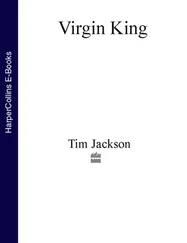1 ...8 9 10 12 13 14 ...32 Almost won. Tyson attended school every day, but ignored his homework, D’Amato didn’t tell Coleman, and neither did he force Tyson to do the homework. He was far more interested in Tyson’s aptitude for training than for academics.
Instead of taking the morning bus, Tyson would run the three miles to school. The teachers finally told him to stop because of the smell from the sweat. So Tyson took the bus there, then ran home in the afternoons. At five o’clock, every weekday, he went to the gym for two hours. In the evenings, he talked to D’Amato, watched television, or read boxing books. On weekends, he’d be up at five in the morning, run a few miles, make his own breakfast, nap, then get to the gym again at twelve sharp. Tyson didn’t join any school team or make any “civilian” friends. His friends were the other boys in the house, all of whom boxed.
That year there were racial tensions between the black and white students in the adjoining high school. School officials were concerned that Tyson might become some kind of leader among the black students. But he did not get involved. “I used to take some of the kids to baseball games down in New York on weekends,” said junior high principal Bordick. “I asked Mike to come and he never did. I got the feeling that he had this block about his past, being a black kid from the slums. This was his break, boxing, and he wanted to do that and nothing else.”
The other students made him pay for being different. They ridiculed his size, his lisping voice, and his desire to be a boxer. The black students were particularly cruel. For living with D’Amato and Ewald, they accused him of hating black people, including his own mother. “Three black girls were teasing him in the hallway about his mother,” remembered Bordick. “He got angry, they ran into the bathroom, and he followed them. He punched the paper towel holder off the wall, screamed a lot, nothing else. I had them all in the office and one of the girls kicked him. He held back; I could see he was seething with anger, but he kept it in. I took him outside. I remember it was November. A cold rain drizzled down. We stood there and I told him he couldn’t lash out at people, he had to learn control.”
Bordick realized that Tyson might never be fully socialized into so-called normal society. It was as if everything, and everyone, conspired to keep him different, all of which pushed Tyson further into boxing. “There was more pressure on Michael to behave because he was Mike the boxer with this difficult background. He felt put-upon because the expectations to conform were greater on him than on other students.”
During the second half of the school year, Tyson seemed better able to cope with the taunts of the other students. He also tried to use charm rather than rebellion with his teachers. “He was streetwise,” said Bordick. “He could play with you almost like a con artist. Mike had this ability to deal with adults on their own level.”
Bordick accepted these realities about Tyson. They represented distortions of what boys his age were usually like, but for that matter everything about Tyson seemed distorted. Even the people who cared for him did so for ulterior reasons. D’Amato certainly cared for Tyson, and wanted him to get through school, but Bordick wasn’t blind to the motives involved. Nor did he think Tyson was. “Michael was smart enough to realize that others have their own con. He must have known that Cus wouldn’t have been interested in him if he wasn’t a boxer. Everyone who lived with Cus at the house boxed. Ever since he was a child, Mike got pushed around. The boxing was an escape. The train was going by and he decided to catch it. I think he expected Cus would benefit too.”
Bordick, of course, was right. D’Amato and Tyson were using each other, initially in harmless ways. D’Amato wouldn’t have let Tyson into the house unless he had held some promise as a boxer. Tyson in turn used boxing, D’Amato, his teachers, anyone, to avoid going back to the reformatory. Beneath the surface, however, in the growing subtext to their relationship, another dynamic was taking shape. D’Amato was tending to a boy’s needs, but mostly he was building a champion. The task became an obsession.
* * *
D’Amato generally wouldn’t spend long hours in the gym working with his stable of young fighters. In the early months, that included Tyson. He would go in only on occasion to refine the instruction given by a trainer he’d been grooming for the previous few years: Teddy Atlas.
Atlas fit the mold of the D’Amato protégé: young, tough, troubled, highly impressionable, and consumed by a desire to box. The two met in 1975. Atlas, then twenty-one years old, was about to go to trial in Staten Island on an assault charge. A neighborhood friend, Kevin Rooney, had been training with D’Amato for a few months. Rooney convinced D’Amato that with help and guidance, Atlas could become a fine boxer. D’Amato appeared before the judge and promised to take in and train Atlas, who got off with five years’ probation.
Atlas, however, got no further than the gym. A congenital spinal problem ended his career. D’Amato saw his potential as a trainer, but Atlas, deeply discouraged, returned to New York. Over the next year, he kicked around Staten Island getting into trouble. One street brawl landed Atlas in the hospital with a knife gash down the entire length of his face. That’s when he decided to return to D’Amato.
The first few months back weren’t easy. “I was a selfish kid, with no direction,” recalled Atlas, who at thirty-four has a ruffled, boyish appearance, even with the scar on his face and the flattened nose. There’s a lot of rough vowels in his Staten Island voice. He also tends to slur, as so many boxers do. “Cus wanted me to help these kids with the boxing, but I could barely help myself.” Twice, Atlas attempted suicide—first with pills, then by breathing in car exhaust fumes. D’Amato saved his life both times. That fact was the turning point for Atlas. “Cus taught me principles of life, how to have purpose and do the right thing, and I gave him my loyalty.”
By the time Tyson arrived in 1980, Atlas was training all of the younger fighters who lived in the house. He also ran D’Amato’s boxing program for the local boys. “I did everything for those kids—took them to boxing tournaments, picnics, hand-holding, you name it.”
Tyson began to occupy the majority of Atlas’s time. The trainer knew well D’Amato’s unique boxing system. In fact, he had the benefit of several refinements D’Amato had made over the years.
While Torres trained for his title fight against Willie Pastrano in early 1965, a pudgy man claiming to be a horse trainer from France came into the gym and boasted that he could double the speed of a fighter’s punches. He had devised a numbering system. There were six steps. In the first, the fighter punched a heavy bag once. In the second, he punched twice, and so on through to the last step of six punches thrown in combination. It was simple yet effective. It systematized the process of acquiring punching speed.
The other trainers and boxers scoffed at the Frenchman’s ideas. But D’Amato was impressed. Combination punching played an important role in his much-ridiculed “system.” Anything that could increase punching speed was an improvement. D’Amato’s system, though, used offense and defense in equal portions. The idea was to move into position without getting hit, then punch and defend in one continuous motion. But that was difficult for a fighter to do. D’Amato knew that more speed could help tremendously.
A natural tinkerer, D’Amato took the six steps and added defensive movement. Step one: punch, then move. Step two: punch, move, punch, and move again. By the sixth step, the fighter unleashed a combination of six punches and defensive movements.
Читать дальше










![Brian Thompson - A Monkey Among Crocodiles - The Life, Loves and Lawsuits of Mrs Georgina Weldon – a disastrous Victorian [Text only]](/books/704922/brian-thompson-a-monkey-among-crocodiles-the-life-thumb.webp)

